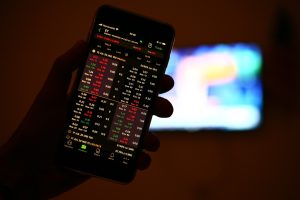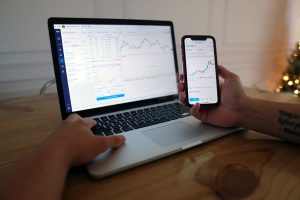Introduction
In the dynamic world of Forex trading, volatility is both a challenge and an opportunity. While it can lead to significant risks, it also offers the potential for substantial rewards. Successful traders understand how to harness volatility to their advantage using advanced techniques that mitigate risks and capitalize on market fluctuations.
Understanding Volatility in Forex
Volatility refers to the degree of variation in trading prices over time. In the Forex market, volatility is influenced by a myriad of factors including economic indicators, geopolitical events, central bank policies, and market sentiment. Traders must comprehend the nature of volatility to anticipate price movements and make informed trading decisions.
Advanced Techniques for Harnessing Volatility
1. Utilizing Volatility Indicators
Volatility indicators such as Bollinger Bands, Average True Range (ATR), and the Volatility Index (VIX) can help traders gauge the intensity of market movements. These tools provide valuable insights into potential price fluctuations, enabling traders to adjust their strategies accordingly. By integrating volatility indicators into their analysis, traders can identify optimal entry and exit points, manage risk, and optimize profit potential.
Traders can use Bollinger Bands to visualize price volatility and identify potential trend reversals. When the bands contract, indicating low volatility, a period of increased volatility and potential price breakout may be imminent. Conversely, widening bands suggest heightened volatility and the possibility of a trend continuation.
The Average True Range (ATR) measures the average range between high and low prices over a specified period. By understanding the average volatility of a currency pair, traders can set appropriate stop-loss and take-profit levels, aligning their risk management strategy with market conditions.
2. Implementing Advanced Risk Management Strategies
Volatility amplifies market risks, making effective risk management crucial for long-term success. Advanced traders employ sophisticated risk management techniques to safeguard their capital and preserve profitability in volatile market conditions.
- Position Sizing: Adjusting position sizes in proportion to market volatility can help mitigate risk exposure. Traders may reduce position sizes during periods of heightened volatility to limit potential losses, while increasing positions when volatility subsides to capitalize on emerging opportunities.
- Utilizing Stop-Loss Orders: Placing stop-loss orders at strategic levels can protect trading positions from adverse price movements. Traders should set stop-loss levels based on volatility indicators and support/resistance levels to ensure optimal risk-reward ratios.
- Diversification: Diversifying trading portfolios across multiple currency pairs and asset classes can help reduce overall portfolio volatility and minimize correlation risk. By spreading risk exposure, traders can mitigate the impact of adverse market events on their portfolios.
3. Leveraging Volatility Trading Strategies
Volatility trading strategies capitalize on price fluctuations resulting from market volatility. Advanced traders employ a variety of volatility-based strategies to profit from both rising and falling markets.
Volatility Breakout Trading: This strategy involves entering trades when price breaks out of a predefined trading range, signaling a potential trend continuation. Traders can use volatility indicators such as Bollinger Bands and ATR to identify breakout opportunities and place trades accordingly.
Volatility Arbitrage: Volatility arbitrage exploits price differentials between related assets to generate profits. Traders identify mispriced assets and execute trades to capture arbitrage opportunities when market conditions deviate from their long-term equilibrium.
4. Advanced Technical Analysis Techniques
Technical analysis plays a pivotal role in navigating volatile Forex markets. Advanced traders utilize a variety of technical analysis techniques to identify high-probability trading opportunities and anticipate price movements.
- Fibonacci Retracement: Fibonacci retracement levels help traders identify potential support and resistance levels based on the Fibonacci sequence. By plotting key Fibonacci levels on price charts, traders can anticipate price retracements and extensions, enabling them to enter trades at favorable levels.
- Elliot Wave Theory: Elliot Wave Theory identifies recurring wave patterns in price movements, enabling traders to forecast future price trends with greater accuracy. By analyzing wave patterns and wave counts, traders can identify the underlying market structure and anticipate potential trend reversals.
- Volume Analysis: Volume analysis provides insights into market participation and sentiment. High trading volumes often accompany significant price movements, indicating strong market conviction. By analyzing volume patterns alongside price action, traders can confirm the validity of price trends and identify potential trend reversals.
5. Psychological Preparedness
Successful trading in volatile markets requires psychological resilience and emotional discipline. Volatility can evoke fear, greed, and uncertainty, leading to impulsive decision-making and irrational behavior. Advanced traders cultivate psychological preparedness through mindfulness, self-awareness, and emotional regulation techniques.
- Developing a Trading Plan: A well-defined trading plan serves as a roadmap for navigating volatile markets. Traders should outline clear entry and exit criteria, risk management guidelines, and trading objectives to maintain discipline and focus amidst market turbulence.
- Practicing Patience: Patience is a virtue in volatile markets. Advanced traders understand the importance of waiting for high-probability trading setups and exercising restraint during periods of uncertainty. By remaining patient and disciplined, traders can avoid impulsive decision-making and adhere to their trading strategy.
- Managing Emotions: Emotions can cloud judgment and impair decision-making in volatile markets. Advanced traders cultivate emotional resilience by practicing mindfulness, meditation, and stress-management techniques. By maintaining a calm and rational mindset, traders can make informed trading decisions and adapt to changing market conditions with confidence.
Conclusion
In conclusion, harnessing volatility requires a comprehensive understanding of market dynamics, advanced technical analysis techniques, and psychological preparedness. By integrating volatility indicators, implementing advanced risk management strategies, leveraging volatility trading strategies, employing advanced technical analysis techniques, and cultivating psychological resilience, traders can navigate volatile Forex markets with confidence and achieve consistent profitability over the long term. With dedication, discipline, and a commitment to continuous learning, traders can unlock the full potential of volatility and thrive in the dynamic world of Forex trading.






